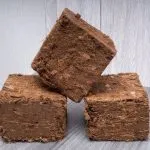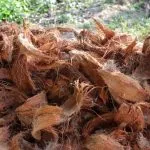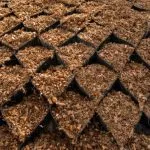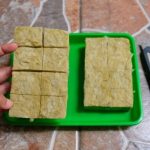As a hydroponic gardener, you understand the importance of selecting the right growing medium for your plants. One of the most commonly used mediums is Rockwool, a lightweight and porous material derived from volcanic rock. However, there are concerns about its sustainability and environmental impact, which have prompted many gardeners to seek alternative mediums for their hydroponic systems.
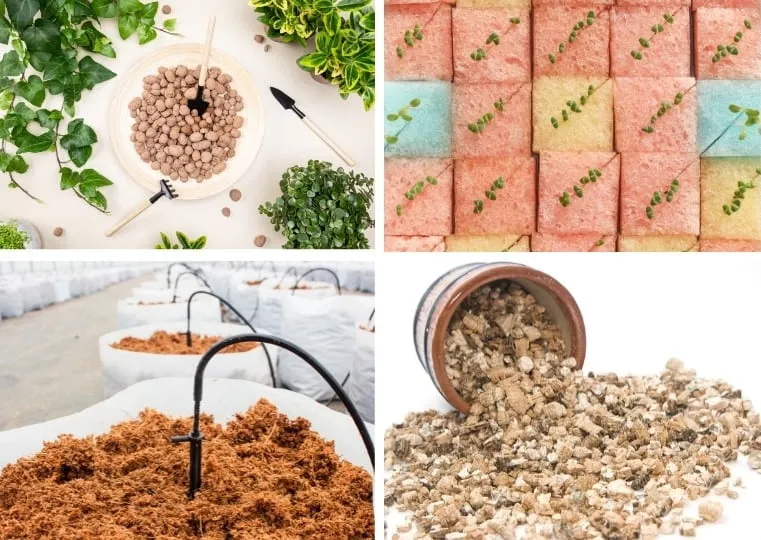
Luckily, a variety of effective Rockwool alternatives for hydroponics exist, ranging from natural materials to synthetic options. Some great choices include perlite, vermiculite, expanded clay pellets, coco coir, and rice hulls, each offering its own benefits and drawbacks. When selecting an alternative, it’s important to consider factors such as water retention, aeration, and compatibility with your specific hydroponic system and plants.
This article will explore various Rockwool alternatives and guide you through their key characteristics, helping you make an informed decision for your hydroponic garden. As you gain a deeper understanding of these alternatives, you’ll be better equipped to create an optimal growing environment for your plants while making a more environmentally conscious choice.
Important Factors to Consider in Growing Mediums
When choosing a growing medium for your hydroponic system, there are several important factors to consider. These factors will ensure that your plants grow healthy and strong, providing you with the best possible harvest.
Aeration and Drainage
Good aeration and drainage are essential for any growing medium. This allows your plants’ roots to access the oxygen they need while preventing water-logging and root rot. Look for a growing medium with a porous structure that supports air exchange and allows excess water to drain away from the roots. Some examples of substrates with good aeration and drainage are perlite, coco coir, and expanded clay pellets.
pH Levels and Nutrient Retention
The ideal pH level for your growing medium is crucial since it affects nutrient availability and uptake. Most plants prefer a slightly acidic environment, with a pH between 5.5 and 6.5. Choosing a pH neutral or easily-adjustable substrate is important. In soilless hydroponic systems, the nutrient solution provides all the necessary nutrients, so nutrient retention in the growing medium is also an essential factor. Organic mediums such as coco coir and peat moss have excellent nutrient retention properties.
Water Retention and Oxygen Transfer
Balancing water retention and oxygen transfer is another key factor when selecting a growing medium. The substrate must hold water effectively to ensure your plants remain hydrated, yet it needs to enable adequate oxygen transfer to the roots. Look for materials that are hydrophilic, like coco coir, which can maintain high water retention and oxygen exchange.
Sterile and Pathogen-Free
Lastly, always opt for a sterile and pathogen-free growing medium to avoid introducing diseases or pests into your hydroponic system. This is especially important in soilless setups, where pathogens can spread quickly and harm your plants. Many commercial growing media, such as Rockwool, are designed to be sterile, while alternative organic mediums, like coco coir, can be treated to ensure they are pathogen-free.
By carefully considering these factors and choosing the right growing medium, you’ll create a thriving environment for your hydroponic plants and enjoy a bountiful harvest.
Traditional Rockwool in Hydroponics
Using Rockwool for hydroponic growing is quite popular for the following reasons:
Advantages of Rockwool
Is Rockwool Safe For Hydroponics? Yes, it is. Rockwool, made from melted basaltic rock and spun into fibers, comes in various forms, such as cubes and slabs, suiting the needs of various hydroponic systems. Here’s why you might find it helpful:
- Excellent water retention: Rockwool can hold a lot of water while still providing plenty of oxygen for your plant roots.
- Air Circulation: The porous structure of Rockwool allows for adequate air circulation around the roots, promoting oxygen availability and preventing root rot. This helps to maintain healthy root development and overall plant growth.
- Inert: It is an inert substance, meaning it does not react chemically with the nutrients or water in the hydroponic system. It does not release any harmful substances or contaminants that could adversely affect plant growth or human health. Rockwool is manufactured in a controlled environment, ensuring sterility and freedom from pathogens. This reduces the risk of plant diseases and pests in hydroponic systems.
- Suitable for various plants: The adaptability of Rockwool allows you to grow a wide range of plants, from seedlings to large fruiting crops.
- Uniformity and ease of use: It is available in various forms, such as cubes, slabs, or grow blocks, making it easy to use in different hydroponic setups. It can be easily transplanted and provides good support for plant roots. Rockwool cubes and slabs have a consistent structure and density, which make managing your hydroponic system more manageable and predictable. Find out which sizes Rockwool cubes are available in and then buy from our list of the top Rockwool products.
Disadvantages of Rockwool
Despite the advantages, Rockwool does have some drawbacks that you should be aware of:
- Environmental concerns: Rockwool production requires high energy consumption and generates significant CO2 emissions. Additionally, disposal of used Rockwool can be challenging since it’s non-biodegradable. It is best to check local regulations for proper disposal methods.
- Irritation: The fibers of Rockwool can cause skin and respiratory irritation if handled improperly. It is recommended to use gloves and a mask when working with Rockwool to minimize any potential irritation.
- Expensive: Rockwool tends to be more expensive than some other hydroponic growing media options. If you’re looking to cut costs, you might want to explore alternatives.
- Insulation: Rockwool is also an insulation material, which means it can retain heat in your hydroponic system. This might be a concern if temperature management is a problem.
- Easy to overwater: Despite its excellent water retention, it’s possible to overwater your plants since Rockwool can hold more water than the plants need. Pay attention to your watering schedule and check for signs of overwatering.
Keep these factors in mind when deciding whether Rockwool is the right hydroponic growing medium for your needs.
Recommended Rockwool Alternatives
Perlite
Perlite is a popular Rockwool alternative for hydroponics. It is a lightweight volcanic rock that provides excellent aeration and oxygenation for your plants. To use perlite effectively, try mixing it with another growing medium, like coconut coir, to help retain moisture and nutrients for your plants.
Vermiculite
Vermiculite, another type of lightweight volcanic rock, can be a great Rockwool substitute in hydroponic systems. It offers good water and nutrient retention, making it an excellent choice for your plants. Like perlite, you can benefit from mixing vermiculite with another medium to provide a balanced growing environment.
Rice Hulls
Rice hulls are a natural and sustainable alternative to Rockwool. These byproducts of rice production are biodegradable and lightweight. To effectively use rice hulls as a growing medium, mix them with another medium, such as perlite, to improve aeration and water retention for your plants.
Peat Moss and Sphagnum Peat Moss
Both peat moss and sphagnum peat moss are organic materials that can work well as Rockwool alternatives. They offer good water retention and provide a suitable environment for beneficial microorganisms. To use these materials in your hydroponic system, consider combining them with other growing mediums like coco coir, to offer a balanced environment for your plants.
Coco Coir and Coco Peat
Coco coir and coco peat, made from coconut husks, are excellent Rockwool alternatives. These sustainable, natural products have several benefits over Rockwool, including better water and nutrient absorption. Using coco coir or coco peat in your hydroponic system can result in healthier plants with stronger root systems. You can also mix these materials with other alternatives like perlite or vermiculite for optimal growth conditions. Find out everything you need to know about coconut coir hydroponics and the differences between growing in rockwool vs coco coir.
Other Rockwool Alternatives to Explore
Expanded Clay and Hydroton Pellets
Expanded clay pellets, also known as Hydroton, are a popular growing medium in hydroponics. Made from natural clay, they are lightweight, porous, and able to retain water and nutrients well. They also provide good aeration for your plant’s roots. Simply rinse the pellets before use to remove any dust, and you’re ready to start planting.
Oasis Cubes and Polyurethane Grow Slabs

Oasis cubes are lightweight foam blocks that can provide an alternative to Rockwool. These cubes offer decent water retention and air circulation, making them suitable for hydroponic systems. Another option is polyurethane grow slabs, which are similar to oasis cubes but in the form of a slab. These can be easily cut to size, allowing you to customize them according to your plant’s needs.
Pumice and Pool Noodles
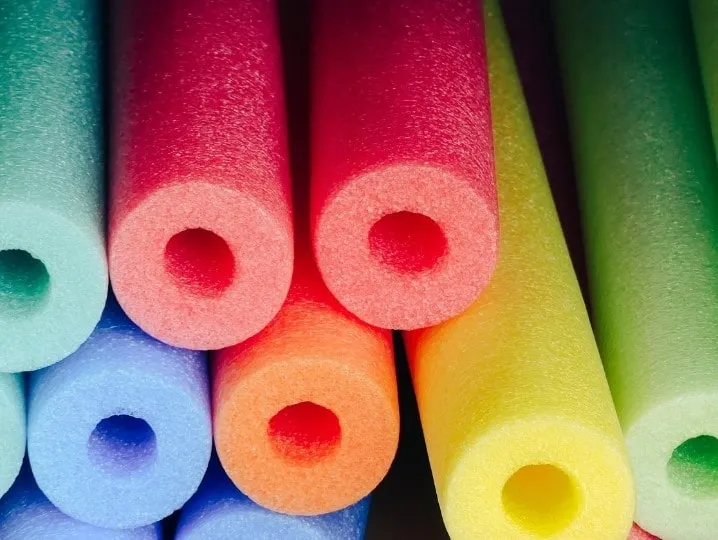
Pumice is a light, porous volcanic rock that can be used as a growing medium in hydroponics. It offers good water retention and aeration. In addition, pool noodles, traditionally used as swimming aids, can be repurposed as a unique alternative. Simply cut the pool noodle across into small pieces and use these to support your plants in your hydroponic system, providing them with adequate airflow and moisture.
Sponge and Jigsaw Foams
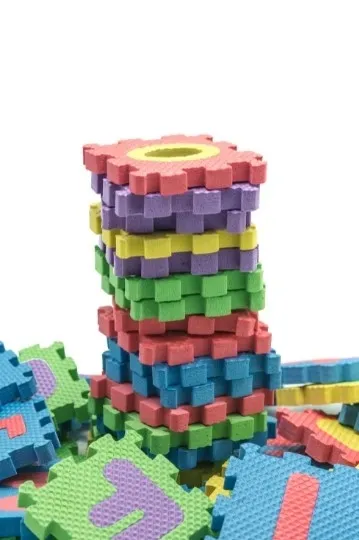
Sponges can serve as an efficient hydroponics Rockwool substitute because they have excellent moisture retention capabilities. They are easy to cut and shape for your hydroponic system, and they can be reused after sterilizing between growing cycles. Jigsaw foams, also known as puzzle mats, share similar advantages with sponges. Made from non-toxic materials, jigsaw foams can be easily cut and shaped to fit your hydroponic setup.
Sand and Gravel
You might also consider using sand and gravel as growing media in hydroponics. Sand offers good water retention and aeration, while gravel allows for proper drainage and air circulation. However, when using these materials, be sure to select a type that doesn’t impact water pH, such as washed river sand or pH-neutral pea gravel. You can also mix sand and gravel with other growing media like perlite to create a custom blend that meets your plants’ specific needs.
Selecting the Ideal Alternative for Your Hydroponic System
When choosing the perfect alternative to Rockwool for your hydroponic system, there are several factors to consider. In this section, we’ll discuss the suitability of different alternatives for various hydroponic systems, the optimal conditions for specific plants, and the importance of environmental and economic factors.
Suitability for Different Hydroponic Systems
The type of hydroponic system you’re using plays a vital role in determining the most effective growing medium. Here are some popular alternatives to Rockwool and the systems they’re best suited for:
- Coco Coir: Suitable for a wide range of systems, including Deep Water Culture (DWC), Nutrient Film Technique (NFT), and drip systems.
- Perlite/Vermiculite: Works well in combination within most systems, including DWC and ebb and flow systems.
- Oasis Cubes: An excellent option for vertical or raft systems due to their structural integrity.
- Clay Pebbles: Ideal for ebb and flow, DWC, and NFT systems because of their excellent drainage and oxygen delivery.
Optimal Conditions for Specific Plants
The chosen growing medium should cater to the specific plants you plan on growing in your hydroponic system. Different plants have varying requirements for water retention, root support, and nutrient delivery. Let’s look at some popular plants and the best Rockwool alternatives for them:
- Tomatoes: Coco coir, perlite, or a mix of both work well, especially in Dutch bucket systems.
- Flowers: Oasis cubes are a suitable choice as they provide good root support and allow for easy transplanting.
- Vegetables: Coco coir and clay pebbles are both good options for most vegetables due to their adequate water retention and airflow support.
- Herbs: A blend of perlite and vermiculite is an excellent choice for herbs, as it ensures the right moisture level and proper aeration.
- Fruits: Oasis cubes work well for fruiting plants, while Kratky method plants can grow in perlite, coco coir, or a mix of both.
Environmental and Economic Factors
When selecting your alternative to Rockwool, consider the environmental impact and cost-effectiveness of each option:
- Coco Coir: A sustainable, natural product made from coconut husks. It’s cost-effective and has a minimal environmental footprint.
- Perlite/Vermiculite: Volcanic rock materials that are reusable but have a higher environmental impact due to mining.
- Oasis Cubes: Synthetic material with a higher price tag and a non-negligible environmental impact.
- Clay Pebbles: Reusable, eco-friendly option with a moderate price point.
Choosing the best hydroponic growing medium often comes down to a balance between the needs of your specific plants, the limitations of your hydroponic system, and the environmental and economic factors that matter most to you. Keep these considerations in mind as you explore the various alternatives to Rockwool on the market.


